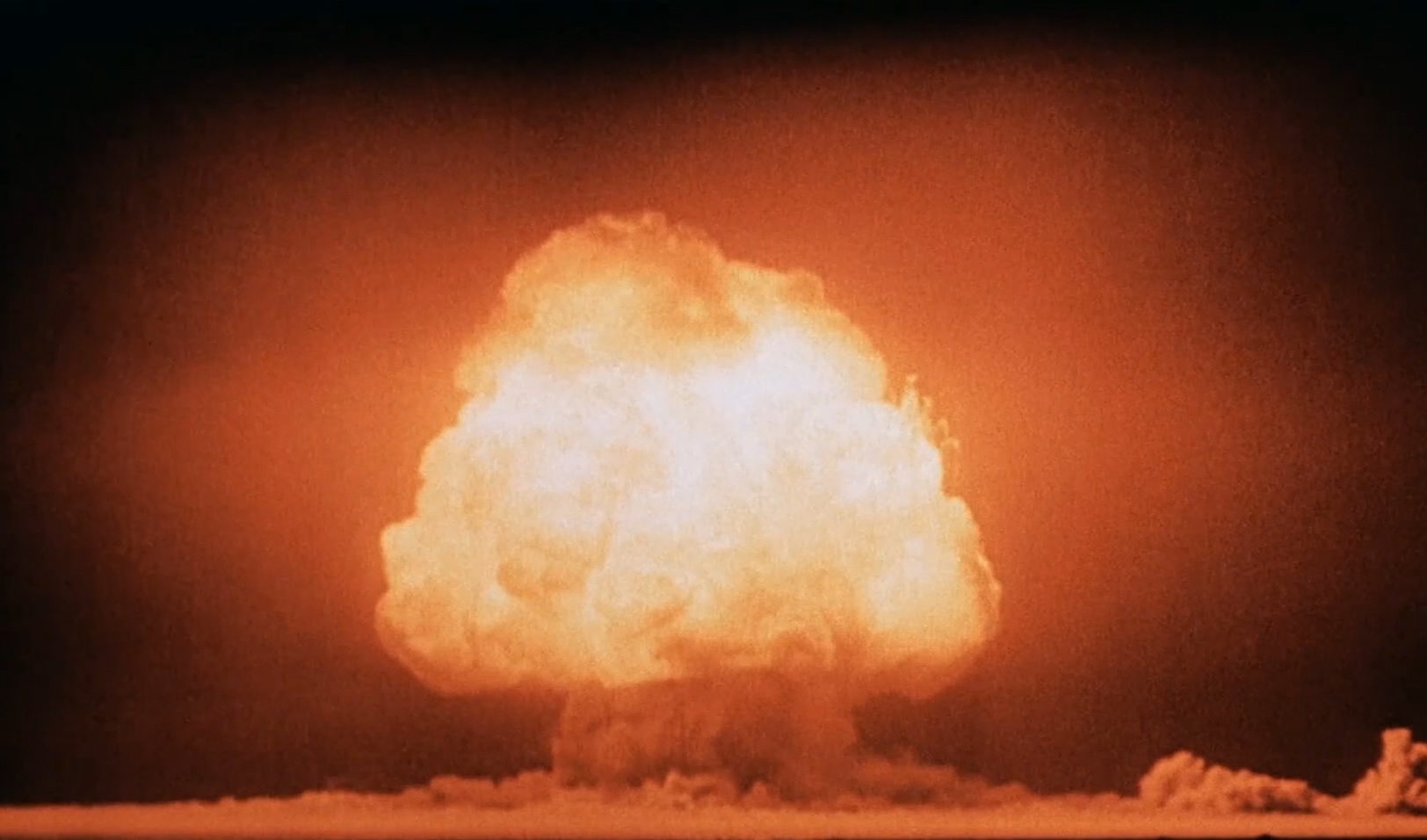Strategic Non-Nuclear Weapons: The 21st Century Manhattan Project
Introduction
Eight decades after the Manhattan Project, the world is witnessing rapidly evolving nuclear architecture. The development of highly efficient cognitive computing and integrated technologies have pushed the world into the Third Nuclear Age. Moreover, the combination of nuclear weapons with emerging technologies has created an implicit link between nuclear and non-nuclear systems. This has led to the development of what is now known as Strategic Non-Nuclear Weapons (SNNWs). This article gives an overview of SNNWs and how they have evolved over time. It also explores their recent deployment as well as the need for a non-proliferation regime for SNNWs.
Strategic Non-Nuclear Weapons and the Changing Nuclear Order
SNNWs can be defined as advanced conventional weapon systems designed and deployed to accomplish strategic functions.1Hoffmann, Fabian. “Strategic Non-nuclear Weapons and Strategic Stability – Promoting Trust Through Technical Understanding.” FRS, 15 Nov. 2021, www.frstrategie.org/en/programs/npt-and-the-p5-process/strategic-non-nuclear-weapons-and-strategic-stability-promoting-trust-through-technical-understanding-2021 The term ‘strategic weapons’ refers to those weapons that can bypass technical and operational levels of warfare and, resultantly, attack the sources of enemy power. The potential applications of strategic weapons can be bifurcated into counterforce and counter-value scenarios. The former targets the adversary’s military-industrial infrastructure whereas the latter targets political and socio-economic centres.2Nuclear Files: Key Issues: Nuclear Weapons: History: Cold War: Strategy: Counterforce and Countervalue. www.nuclearfiles.org/menu/key-issues/nuclear-weapons/history/cold-war/strategy/strategy-countervalue-force.htm These weapons, although non-nuclear in nature, are highly destructive and have significant strategic implications.
The post-Cold War era has been characterised by the rapid deployment of “disruptive technologies” in the military sphere. This creates an increasingly interconnected nexus of advanced weapon systems resulting in the phenomena known as ‘Nuclear Entanglement’. Consequently, this intermixing creates ambiguity where the line between nuclear and non-nuclear technologies fades away. This is where SNNWs come into play.
The term ‘Conventional Prompt Global Strike’ was used to denote SNNWs as far back as the early 2000s. These Conventional Prompt Global Strike (CGPS) Weapons included technologies such as Boost-Glide Technology and Hypersonic Cruise Missiles in addition to their antisatellite (ASAT) capabilities and cyber warfare applications.3Acton, James M. “Silver Bullet? Asking the Right Questions About Conventional Prompt Global Strike.” Carnegie Endowment for International Peace, 3 Sept. 2013, https://carnegieendowment.org/2013/09/03/silver-bullet-asking-right-questions-about-conventional-prompt-global-strike-pub-52778 Both Kinetic and non-kinetic variants of SNNWs may be used to achieve strategic effects.4Hoffmann, “Strategic Non-nuclear Weapons,” www.frstrategie.org/en/programs/npt-and-the-p5-process/strategic-non-nuclear-weapons-and-strategic-stability-promoting-trust-through-technical-understanding-2021 The kinetic Strategic Non-nuclear weapons are used for destructive abilities whereas non-kinetic Strategic Non-nuclear weapons are used in Cyber warfare to deny tactical command and control (C2) or other diverse electronic warfare capabilities. SNNWs may carry non-nuclear or nuclear payloads, this creates indeterminacy which, in turn, can raise escalation. In addition to the high level of manoeuvrability of these weapon systems, dual capability adds even greater risk that upends the geostrategic order of the world. In this ‘Third Nuclear Age’, the developments in SNNWs will create a similar effect as the developments in nuclear weapons.5Futter, Andrew, and Benjamin Zala. “Strategic Non-nuclear Weapons and the Onset of a Third Nuclear Age.” European Journal of International Security, vol. 6, no. 3, Cambridge UP, Aug. 2021, pp. 257–77. https://doi.org/10.1017/eis.2021.2
Therefore, there is a high possibility that the broad applicability of SNNW might initiate an arms race across the globe where global powers form blocs in an attempt to gain a strategic edge over their adversaries.6Naylor, Jenny L. “The Third Nuclear Age.” Comparative Strategy, vol. 38, no. 4, Routledge, Aug. 2019, pp. 276–88. https://doi.org/10.1080/01495933.2019.1633185
Russia-Ukraine war: A SNNW Case study
SNNWs are used to coerce all forms of opponents’ power, be it from social, political, or military standpoints. The Russia-Ukraine war depicts the grim portrayals of unintended drawbacks of these weapon technologies. The diverse application potential of SNNWs has been repeatedly utilised in this ongoing conflict. Amidst numerous strikes, the Russian attack on 9th March 2023 is of great importance. A total of 81 missiles were used in a large-scale attack on Ukraine. A range of High-precision long-range air, sea, and land-based weapons, including the Kinzhal hypersonic missile system was used.7Picheta, Rob. “Russia Pummels Ukraine With Array of High-tech Weaponry in Nationwide Assault.” CNN, 10 Mar. 2023, https://edition.cnn.com/2023/03/09/europe/ukraine-russia-missile-attack-kinzhal-intl/index.html Kinzhal is a dual-capable hypersonic missile that resulted in a temporary power cut at Ukraine’s Zaporizhzhia nuclear plant, Europe’s largest nuclear power plant.8Jazeera, Al. “What Are the Hypersonic Missiles Russia Is Using in Ukraine?” Explainer News | Al Jazeera, 10 Mar. 2023, www.aljazeera.com/news/2023/3/10/what-are-the-hypersonic-missiles-russia-is-using-in-ukraine Did Russia use this technology to demonstrate its capabilities to NATO or simply to overwhelm Ukraine? While this question can be debated, what is clear is that the use of such systems reaffirms the threat of nuclear entanglement due to the proximity of nuclear and non-nuclear assets and the ambiguity of the payloads of these hypersonic missiles.
The current strife between the Russian and European coalitions gives the impression of a stagnant bloc system that views global conflicts as a zero-sum game. Resultantly, the world finds itself entangled in a perpetual arms race. While Russia showcases its military capability, NATO’s continuous provision of advanced military equipment to Ukraine balances the equation. NATO-funded projects like Defense Innovation Accelerator for the North Atlantic (DIANA) and the United States’ Defence Advanced Research Projects Agency (DARPA) are actively working on emerging and disruptive technologies in order to enhance their respective military capabilities.
Developing international non-proliferation regimes
“In the case of missiles and other delivery systems, there is no international prohibition or non-proliferation treaty that establishes a clear norm against their development, production, possession, or use.”
Kolja Brockmann, SIPRI
The complexities and dangers associated with SNNWs might lead one to believe that the global community is investing time and resources in preventing the proliferation of these systems. Unfortunately, there has been scant diplomatic progress in this regard. Moreover, all major global actors seem to be using these systems as technological milestones to gain a momentary strategic edge over their opponents. Hence, there is a legitimate concern about a new arms race that will add another threat to global security.
Furthermore, existing non-proliferation regimes are losing their credibility due to the constantly evolving dynamics of advanced technologies and due to their non-binding nature. The Missile Technology control regime (MTCR) is a voluntary regime without any legal binding on the partners.9“MTCR US Dept. Of State.” United States Department of State, 15 Jan. 2021, www.state.gov/remarks-and-releases-bureau-of-international-security-and-nonproliferation/missile-technology-control-regime-mtcr-frequently-asked-questions Although the Wassenaar Arrangement (WA) is seen as a benchmark for future agreements on export control, Wassenaar members cannot veto exports by another member. WA does not have a ‘no undercut rule’ that means that if one member denies the transfer, the other member is not obligated to do so.10Sonde, Farah. “Fact Sheet: The Wassenaar Arrangement.” Center for Arms Control and Non-Proliferation, Mar. 2023, https://armscontrolcenter.org/fact-sheet-the-wassenaar-arrangement/
Conclusion
In summary, the developing technologies have created a vacuum in the global nuclear order where SNNWs have rendered the current non-proliferation regimes less important. The wide-ranging applicability of these weapon systems poses a threat to the already bleak condition of global security. Additionally, it intensifies nuclear entanglement as these advanced weapon systems and nuclear technologies have an inextricably intertwined setup. The case of the Russia-Ukraine conflict shows that the use of SNNWs has considerably increased, therefore, it calls for swift actions on a global level. There is a need for aggressive diplomatic efforts to contain the spread of these advanced systems. However, each missed diplomatic opportunity poses an existential threat for the days to come. Today’s world, like a point in the past, presents the current leadership with two options: To continue the partisan geo-strategic approach, thus polarising the world further, or acting sensibly by providing an all-inclusive framework, including third-world defence and strategic perspective considerations, for global SNNW governance. Unfortunately, if the global community fails to come together, SNNWs are likely to become the 21st century’s Manhattan Project.

Khuzaima Aftab
Khuzaima is an independent researcher with a keen interest in International Affairs and Security Studies

